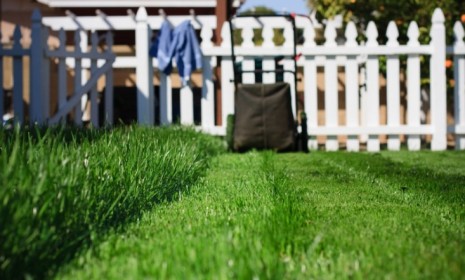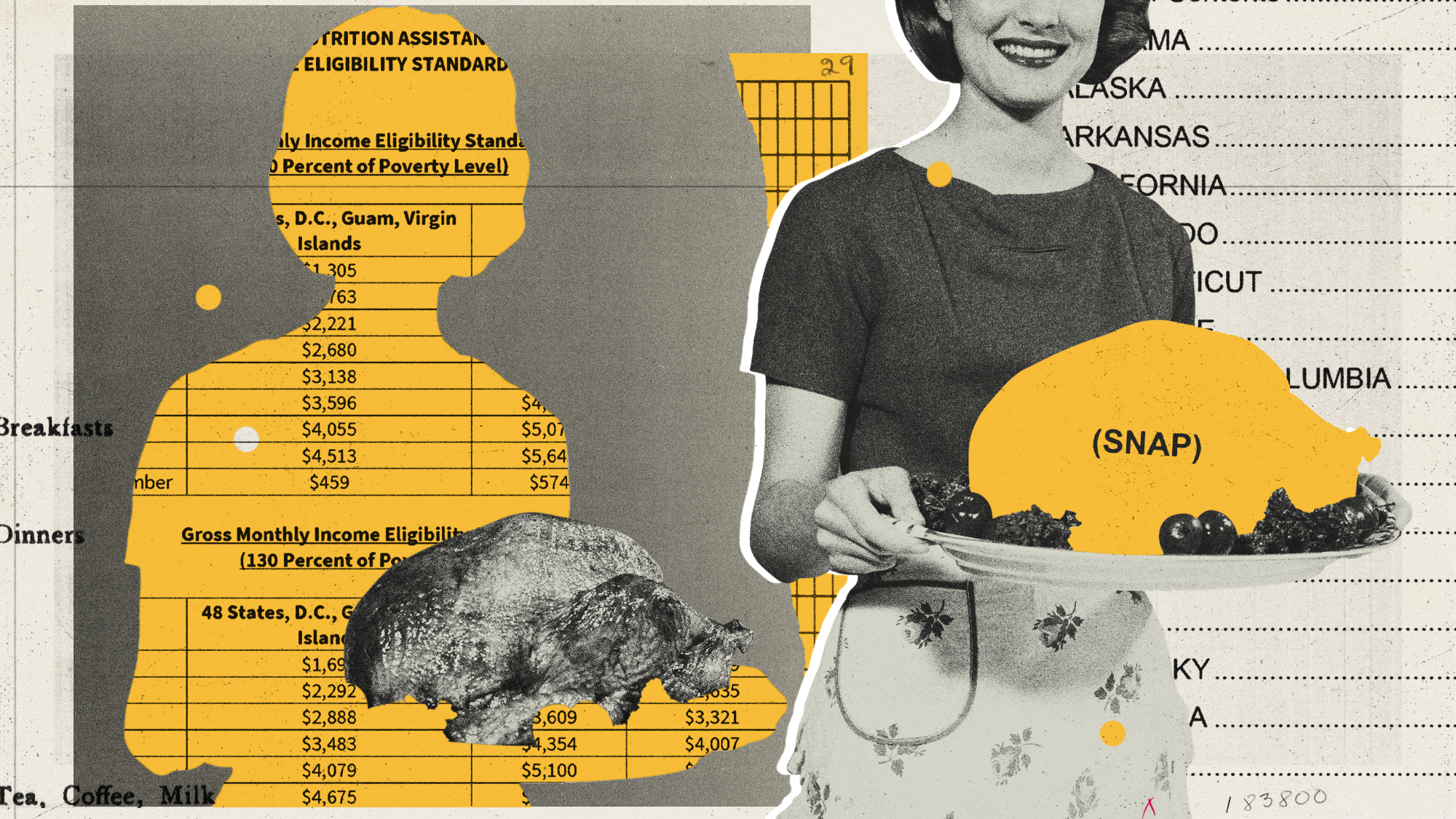Blades of glory: America's love affair with lawns
What’s behind our collective obsession with weed-free expanses of velvety green?

Why do we have lawns?
Whether we know it or not, we’re imitating European royalty. The first lawns were created by the nobles and aristocrats of 17th- and 18th-century Europe, including Louis XIV of France, whose Versailles gardens were the first to include squares of tapis vert, or “green carpet.” The idea of lawns as status symbols and “pleasure grounds” caught on among French and British landed gentry, who relied on servants, sheep, and goats as lawn mowers. After the American Revolution, the trend hopped the Atlantic and flourished among the new nation’s landed aristocrats. George Washington had an English-style lawn at his home in Mount Vernon, as did Thomas Jefferson at Monticello. Front lawns didn’t really trickle down to the common man “until the development of suburban housing after the Civil War,” said Virginia Scott Jenkins, author of The Lawn: A History of an American Obsession. With World War II’s end and Americans’ mass exodus from cities, lawns became emblems of American leisure and prosperity—and a burden for generations of homeowners.
Why take all that trouble to grow grass?
The Week
Escape your echo chamber. Get the facts behind the news, plus analysis from multiple perspectives.

Sign up for The Week's Free Newsletters
From our morning news briefing to a weekly Good News Newsletter, get the best of The Week delivered directly to your inbox.
From our morning news briefing to a weekly Good News Newsletter, get the best of The Week delivered directly to your inbox.
A well-kept lawn is an outdoor refuge, a place for touch football and summer parties, “a carpet all alive,” said the poet William Wordsworth. Writer Katherine S. White called the lawn “a soft mattress for a creeping baby” that adds “restful green perspectives” to the landscape. Realtors say a nice lawn adds as much as 11 percent to the value of a home. Beyond curb appeal, tidy lawns are the connective tissue of neighborhoods, providing a common element that links our residences to one another and to nature. And researchers have recently discovered that chemicals released by a freshly mown lawn make people feel happy and relaxed, and may even prevent mental decline in old age. Today, about 80 percent of all American homes have lawns. But great sacrifices of time, energy, money, and natural resources go into mowing, trimming, edging, and feeding all that grass. As Little Richard once said, “The grass may look greener on the other side, but believe me, it’s just as hard to cut.”
What does a nice lawn cost?
Lawn care is a $40-billion-a-year industry in the U.S. Because much of the country is not hospitable to turfgrasses—none of which are native species—we use 90 million pounds of fertilizer and 78 million pounds of pesticides annually just to keep lawns thriving, bright green, and bug-free. Lawns also consume massive amounts of water—more than U.S. farmers use to grow wheat, or corn, or any other agricultural crop. The Environmental Protection Agency estimates that one third of all water from public sources goes toward landscaping—most of it on grass. In tropical Florida, half of the public water is used for landscaping. In the Western states, where water is especially scarce, that figure is 70 percent.
Do lawns hurt the environment?
A free daily email with the biggest news stories of the day – and the best features from TheWeek.com
Yes, in numerous ways. Fertilizers contain high levels of phosphorus and nitrogen, which run off into drains during rainstorms, contaminating drinking water, leaching into rivers and streams, and causing ecological havoc. Pesticides and herbicides, too, which are used by homeowners in ever-increasing quantities, find their way into the air and soil. Then there’s the carbon footprint of the lawn. Americans spend more than 3 billion hours a year pushing or riding gasoline-powered lawn and garden equipment that gives off toxic exhaust and greenhouse gases. A gas-powered mower emits as much pollution per hour as 11 cars. These facts have triggered a backlash against the country’s love affair with large, immaculate swaths of green grass. “We have begun to recognize that we are poisoning ourselves with our lawns,” said author and activist Michael Pollan.
Has the backlash been effective?
To a small degree. Though there has been no reduction in the acreage of new lawns being planted, activists have raised awareness so that lawn care is less destructive. In Canada, more than 100 cities have banned or restricted pesticide use on private property. This year, New York banned pesticides and herbicides on school lawns and playing fields, and Maryland limited the nutrient content of lawn fertilizer and when it may be applied. In the West, more communities are replacing turf with indigenous plants. In the high-desert country of Clark County, Nev.—home of Las Vegas—lawns are now banned from the front yards of new homes.
What is the future of the lawn?
“The perfect lawn is in peril,” said Ted Steinberg, an environmental historian. That’s a good thing, according to groups like Wild Ones, the first grassroots anti-lawn advocacy group. There are saner, organic alternatives: low-maintenance ground cover, walkways, and gardens. “Freedom lawns” use no chemicals or extra water and need very little mowing. But there are even more natural solutions: Last week, school officials in Carlisle, Pa., turned over the district’s lawn care to a herd of hungry sheep, saving $15,000 a year in landscaping costs.
The war against weeds
Half of all the plants growing in America have been classified as weeds. The federal government even publishes a “Noxious Weed List.” But what makes a plant a weed? “Weeds are plants that sabotage human plans,” said Richard Mabey, a naturalist and author. On that very long list are dandelion, clover, crabgrass, and a myriad of botanical eyesores that steal nutrients and ruin a lawn’s uniformity. At great expense of money and effort, humans have declared war against thousands of weed species in the U.S.—from the most notorious, like poison ivy, to plants that are actually pretty, such as the corn poppy. It’s a battle we can never really win, since evolution has taught plants—including those we classify as weeds—to spread their seeds on the wind. Weeds flourish wherever we clear land, dig, or farm. Human activity has even backfired to create “superweeds” like cogon grass, which flourished in Vietnam when Agent Orange wiped out its natural enemies. Today, having somehow crossed the Pacific, cogon grass is taking over large sections of the southeastern U.S.
-
 ‘The worry is far from fanciful’
‘The worry is far from fanciful’Instant Opinion Opinion, comment and editorials of the day
-
 How are Americans bracing for the end of SNAP?
How are Americans bracing for the end of SNAP?TODAY'S BIG QUESTION Millions depend on supplemental federal food funds that are set to expire this month, as the government shutdown begins to be acutely felt
-
 Book review: ‘Joyride: A Memoir’
Book review: ‘Joyride: A Memoir’Feature A journalist’s story of how she chased and accomplished her dreams